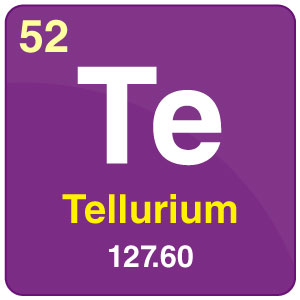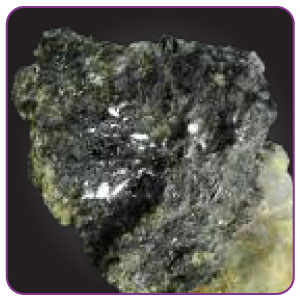
| Symbol | Te |
| Atomic Number | 52 |
| Atomic Mass | 127.6 g.mol-1 |
| Discovered by | Franz Muller von Reichenstein in 1782 |

Table of Contents
Chemical Properties of Tellurium
| Electronegativity according to Pauling | 2.1 |
| Density | 6.24 g.cm-3 |
| Melting Point | 450 °C |
| Boiling Point | 1390 °C |
| Van Der Waals radius | 0.137 nm |
| Ionic Radius | 0.221 nm (-2) ; 0.089 nm (+4) |
| Isotopes | 39 known isotopes |
| Electronic Shell | [ Kr ] 4d10 5s25p4 |
| Energy of First Ionisation | 869.0 kJ.mol -1 |
Tellurium (Te) is a chemical element with atomic number 52, discovered by Franz muller Von Reichenstein in the year 1782. It is a rare, brittle, mildly toxic and silvery-white metalloid. Tellurium gives a greenish-blue flame when burnt in the air. It does not dissolve or react with water or hydrochloric acid but dissolves in nitric acid.
Tellurium has no biological role. However, some fungi use it as a substitute for sulphur.
Learn all the elements in BYJU’S Interactive Periodic Table
Applications of Tellurium
- Metallurgy is the prime application of Tellurium. It is used for making iron, stainless steel, lead and copper alloys.
- It is also used in the manufacture of solar panels, memory chips and optical modulators.
- Tellurium and its components are used as pigments for ceramics.
- Used in the manufacture of rubber that is highly resistant to heat.
Health effects of Tellurium
As it is a very rare element, it is very rare a normal human can encounter it. But when inhaled it may cause many serious health problems which include drowsiness, metal taste, headache and dry mouth.

Comments